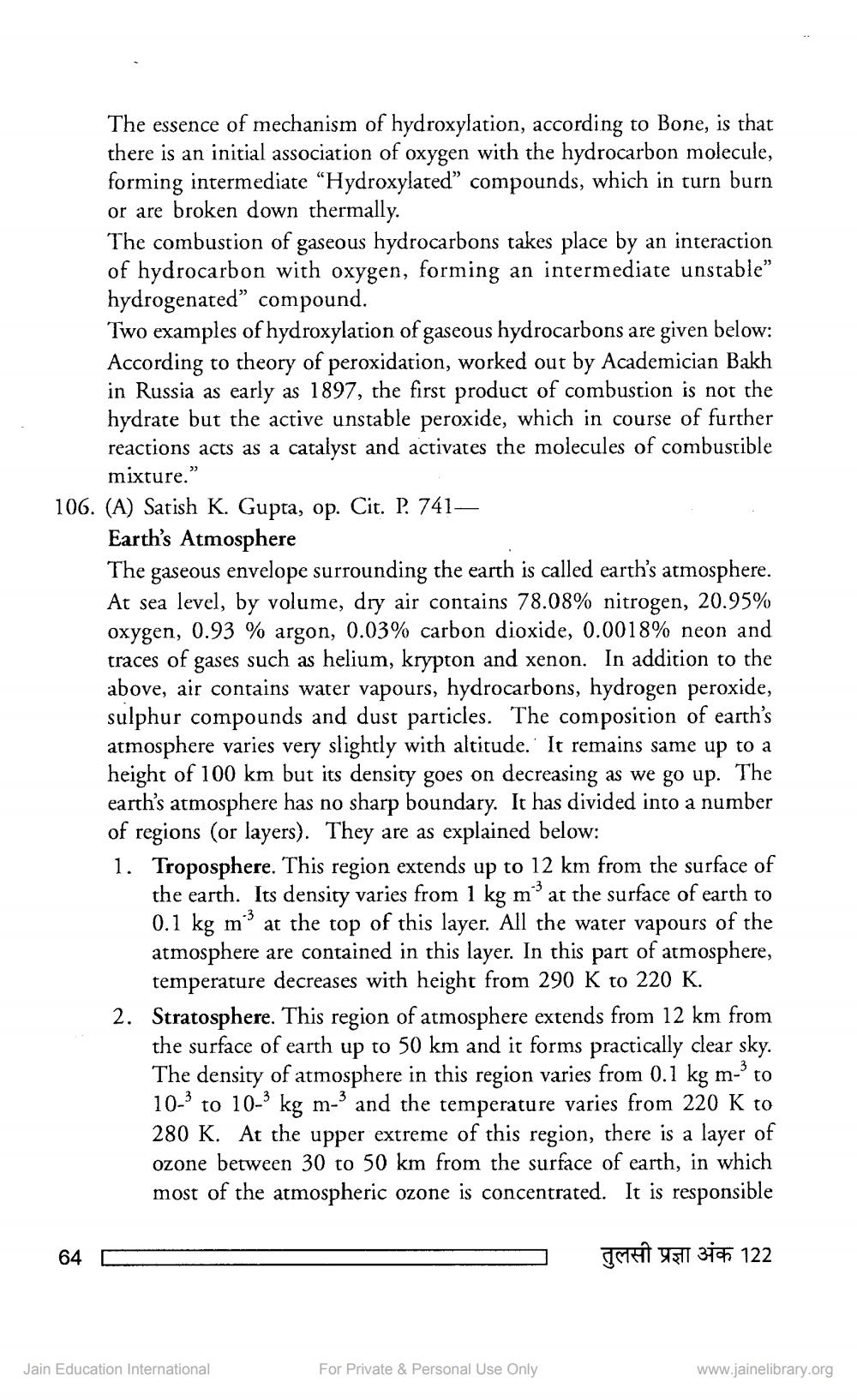________________
The essence of mechanism of hydroxylation, according to Bone, is that there is an initial association of oxygen with the hydrocarbon molecule, forming intermediate “Hydroxylated” compounds, which in turn burn or are broken down thermally. The combustion of gaseous hydrocarbons takes place by an interaction of hydrocarbon with oxygen, forming an intermediate unstable” hydrogenated” compound. Two examples of hydroxylation of gaseous hydrocarbons are given below: According to theory of peroxidation, worked out by Academician Bakh in Russia as early as 1897, the first product of combustion is not the hydrate but the active unstable peroxide, which in course of further reactions acts as a catalyst and activates the molecules of combustible
mixture.” 106. (A) Satish K. Gupta, op. Cit. P. 741—
Earth's Atmosphere The gaseous envelope surrounding the earth is called earth's atmosphere. At sea level, by volume, dry air contains 78.08% nitrogen, 20.95% oxygen, 0.93 % argon, 0.03% carbon dioxide, 0.0018% neon and traces of gases such as helium, krypton and xenon. In addition to the above, air contains water vapours, hydrocarbons, hydrogen peroxide, sulphur compounds and dust particles. The composition of earth's atmosphere varies very slightly with altitude. It remains same up to a height of 100 km but its density goes on decreasing as we go up. The earth's atmosphere has no sharp boundary. It has divided into a number of regions (or layers). They are as explained below: 1. Troposphere. This region extends up to 12 km from the surface of
the earth. Its density varies from 1 kg m at the surface of earth to 0.1 kg mo at the top of this layer. All the water vapours of the atmosphere are contained in this layer. In this part of atmosphere,
temperature decreases with height from 290 K to 220 K. 2. Stratosphere. This region of atmosphere extends from 12 km from
the surface of earth up to 50 km and it forms practically clear sky. The density of atmosphere in this region varies from 0.1 kg m-to 10- to 10-3 kg m-% and the temperature varies from 220 K to 280 K. At the upper extreme of this region, there is a layer of ozone between 30 to 50 km from the surface of earth, in which most of the atmospheric ozone is concentrated. It is responsible
64 D
Tout 4511 317 122
Jain Education International
For Private & Personal Use Only
www.jainelibrary.org




